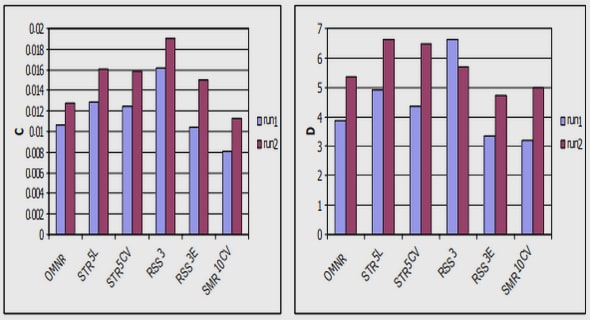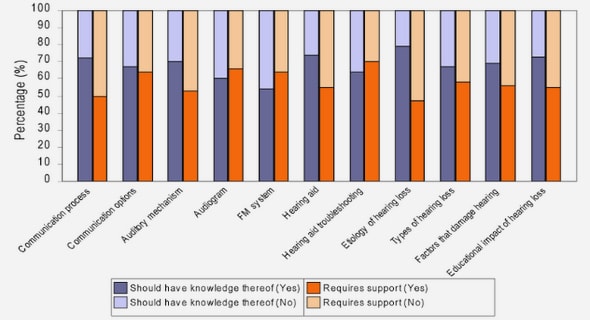Get Complete Project Material File(s) Now! »
Denitrification pathways
Denitrification is initially nominated to describe one phenomenon (e.g. nitrogen loss in N cycle) and was recognized by Kluyver as an anaerobic respiration process. Denitrifying bacteria in the water systems involve numerous physiological and morphological characteristics, most of the denitrifying bacteria being facultative. However, the capacity to denitrify has been also found in some Archaea and Fungi (Thorndycroft et al., 2007).
Denitrification by heterotrophic bacteria
The complete heterotrophic denitrification consists of sequential reductive reactions from NO3- to NO2-, NO, N2O and finally to N2, carried out by heterotrophs (Conthe et al., 2019). At the same time, four different enzymes are involved in those processes: NAR, NiR, NoR and NoS. Each enzyme uses a redox active metal cofactor, such as molybdenum for NO3- reduction, iron or copper for nitrite reduction, iron for NO reduction and copper of N2O reduction (Richardson et al., 2009). Therefore, heterotrophic denitrifiers have two abilities: producing and consuming N2O. Depending on the environmental conditions regulating enzymatic rates (NOR and NOS) heterotrophic processes are either a possible source (NOR rate > NOS rate), or in contrast can play as a sink of N2O (NOS rate > NOR rate) (Figure 1.5).
Denitrification as an N2O sink in the denitrification process
During the heterotrophic denitrification, N2O gas can be both produced and consumed by the denitrifying organisms unlike the AOB are invariably net sources of N2O . The ability to emit N2O will be strongly dependent on the intrinsic capacity of its heterotrophic denitrifying community to reduce N2O. A community with low NOS activity relative to the other reductases (i.e. NAR, NIR and NOR) will be a strong N2O-source, while one with high relative NOS activity will emit less N2O and may even be able to function as a net sink for N2O produced during nitrification, as observed in microcosm experiments with Leca-particle biofilms in Mao et al.(2008).
Heterotrophic denitrification can be found in different wastewater treatment systems. In a recent study, Conthe et al. (2019) showed that N2O reduction rates was 2–5 times higher than NO3− reducing rates in activated sludge samples. Adding substrates into the previous samples demonstrated an overcapacity of N2O reductase is widespread in denitrifying systems, which is more likely related to physiology than community composition.
N2O emissions related to denitrification
In a very recent publication, Sabba et al. (2018) summarized the N2O emission from a denitrifying biofilm process. Here we briefly selected the major contents from this review article.
The N2O formation in wastewater denitrification processes is often due to selective inhibition of the NOS enzyme (Guo et al., 2017).
The N2O production and consumption in the heterotrophic catabolism occurred at the same time. Externally supplied N2O can be reduced concurrently with NO3− and NO2−. While many denitrifying bacteria have a complete reduction pathway and can reduce NO3− and NO2− all the way to N2, less is known about bacteria that can grow with N2O but not with NO3− or NO2−.
The difference (or special) of the N2O formation and reduction behavior can be due to the difference of the type of the denitrifying microorganisms. However, the actual contribution of DNRA to N2O formation in these species remains uncertain (Butterbach-Bahl Klaus et al., 2013)
Behavior regarding N2O emissions may also vary based on the type of electron donor. While the details on each of these donors are beyond the scope of this review, the kinetics for each donor can have important impacts on N2O formation and consumption.
N2O production models by heterotroph bacteria
Four-step denitrification models have been proposed to predict the accumulation of the intermediates during all denitrification process including the N2O (Hiatt and Grady, 2008; Ni et al., 2011; Pan et al., 2013). To date, two distinct concepts have been proposed, which are represented by ASMN (Hiatt and Grady, 2008) and ASM-ICE (Pan et al., 2013), respectively. Carbon oxidation and nitrogen reduction processes were directly coupled during 4 redox reactions in the ASMN model, while indirectly coupled during 5 redox reactions through electron carriers in the ASM-ICE model. However, more steps in the latter model allowed to describe the N2O production under more diverse conditions than the former model.
N2O model upgrade : Combining AOB and heterotrophic denitrification
Different approaches have been reported to integrate the N2O production/consumption by both AOB and heterotrophic denitrifiers into a comprehensive N2O model: i) ASM-type models that combine one of the single-pathway models of AOB with ASMN of heterotrophic denitrifiers (Ni et al., 2011; Pocquet et al., 2013; Guo and Vanrolleghem, 2014); ii) Electron balance-based model that integrate the electron carrier based two pathway model of AOB and ASMN (Ni et al., 2015). Both modelling approaches have been successfully applied to describe N2O emissions from mixed culture nitrification-denitrification systems and to identify the relative contributions between AOB and heterotrophic denitrifies to total N2O production (Ni et al., 2011, 2013a, 2015).
In these integrative studies consumption of N2O by heterotrophic denitrification (as a N2O sink) is noticed and reduces overall N2O production under the conditions of high COD to N ratio and/or low DO level.
Anammox pathways
Anaerobic ammonium oxidation is a microbial process which release dinitrogen gas (N2) (Figure 1.1). Bacteria catalysing this process oxidize NH4+ to N2 gas with NO2− as an electron acceptor. It was designated as anammox bacteria (AMX) or anaerobic ammonium oxidation bacteria (AnAOB). Mulder et al (1995) first experimentally confirmed this process in a denitrifying bioreactor operated in the Netherlands. Prior to this, theoretical chemist Engelbert Broda ever predicted the presence of a previously unknown lithotrophic microorganisms that can oxidize NH4+ to N2 gas with NO2- or NO3- as electron acceptors (Broda, 1977).
Multiple reactions and pathways
Overall catabolic process of AMX can be simplified by the following equation:
Equation 1.12 N 4+ + NO−2 → N2 + 2H2O.
Based on our current understanding, the anammox catabolism is composed of three consecutive, coupled reactions with two intermediates, nitric oxide (NO), and hydrazine (N2H4). First, nitrite is reduced to NO with nitrite reductase (NirS) which is then, as we understand, condensed with ammonium to form hydrazine, via a multi-enzyme complex hydrazine synthase (HZS). Finally, hydrazine is oxidized to dinitrogen gas by hydrazine dehydrogenase (HDH) (Maalcke et al., 2014).
Microbiology
Since its discovery in Delft, Anammox bacteria are ubiquitously distributed in a variety of ecosystems (Schmid et al., 2005), pilot plants for the ammonium removal (van Dongen et al., 2001; Fux et al., 2002), oxygen minimum zones (OMZs) of ocean (Kalvelage et al., 2011), brackish (Teixeira et al., 2012), freshwater systems (Penton et al., 2006), terrestrial environments (Shen et al., 2015), and marine sediments (Jensen et al., 2007) as well as the sub-oxic zone of the Black sea (Kuypers et al., 2003). In addition, anammox populations were also found in the extreme environments (Rysgaard and Glud, 2004; Borin et al., 2013; Russ et al., 2013; Oshiki et al., 2015).
The wide distribution of AnAOBs indicated the community diversity. Until now, all reported AnAOBs are affiliated with a monophyletic group in the phylum Planctomycetes, and can be further divided into five candidate genera: ‘Ca. Kuenenia’, ‘Ca. Brocadia’, ‘Ca. Anammoxoglobus’, ‘Ca. Jettenia’ and ‘Ca. Scalindua’ (Oshiki et al., 2015). ‘Ca. Brocadia’ and ‘Ca. Kuenenia’ are the most abundant in engineered anammox systems. ‘Ca. Brocadia’ prefers environments with high NH4+ and NO2- concentrations such as wastewater treatment plant, while ‘Ca. Kuenenia’ with lower affinity constants for NH4+ and NO2- is able to outcompete ‘Ca. Brocadia’ under the substrate-limited condition (Oshiki et al., 2015). ‘Ca. Scalindua’ prefers salty environments (Kuypers et al., 2003) and thrives at lower temperature ranges than other anammox bacteria (Awata et al., 2013). However, the information on the physiological characteristic for ‘Ca. Anammoxoglobus’ is scare.
The microbial competitions for NO2- among three anammox species (i.e. ‘Ca. Brocadia sinica’, ‘Ca. Jettenia caeni’ and ‘Ca. Kuenenia stuttgartiensis’) were investigated under different nitrogen loading rates in MBRs. Results showed that ‘Ca. Brocadia. sinica’ dominated at high NLRs and present throughout the gel beads and granules, while ‘Ca. Jettenia. Caeni’ dominated at low NLRs and distributed as spherical microclusters in the inner part (low NO2−) (Zhang et al., 2017). De Cocker et al. (2018) successfully enriched the anammox during the step-wise decreasing temperatures (from 30 to 20, 15, 12.5 and 10°C) in SBR for one year. AnAOB enrichment (increasing hzsA and 16S rDNA gene concentrations) and adaptation (shift from Ca. Brocadia to Ca. Kuenenia in SBR loweringT) contributed to the high specific ammonium removal rates (82.2 and 91.8 mg NH4-N gVSS-1 d-1 at 12.5 and 10 °C respectively) at the end.
The genomic studies expand our knowledge of AnAOB physiology. A comparison among three specific species belonged within different genera: ‘Ca. Kuenenia stuttgartiensis’, ‘Ca. Scalindua profunda’ and ‘Ca. Jettenia caeni’ was made (Figure 1.6). Results showed that nearly one third of genes located in the genomes, including nxrAB, hzsBGA, hds/hao and acsABCD, were commonly shared. Interestingly, both the nirS and nirK orthologues were missing in the ‘Ca. Brocadia fulgida’ and ‘Ca. Brocadia sinica’ genomes. In addition, the genetic studies were able to predict the observation of the involvement of anammox bacteria nirK in NO2- reduction (Hira et al., 2012).
Oxygen inhibition
Oxygen inhibition has been described a lot for the marine and freshwater systems but this inhibition is reversible. The variability in the reported DO inhibitory levels can be due to the genera differences, potential microbial adaptation, testing procedure. The recovery and reversibility of activity following aerobic conditions was first investigated by Seuntjens et al. (2018). In this study, recurrent DO (0.5-8 mg O2/L) was exposed into an anammox reactor (biomass diameter > 0.2 mm). Results showed that the first high-DO exposition resulted in the complete inhibition (IC100 ≤0.02 mg O2/L) of AnAOB but recovered gradually after 5-37 hours without the oxygen exposure in order to reach a steady-state activity dependent on the perceived inhibition.
Potential N2O emissions from anammox-related processes
Direct N2O emission from PNA has not been demonstrated until now. Recently authors also reported the possible existence of unknown N2O pathway based on the isotopic measurements during combined PNA system. Harris et al. (2015) observed that the N2O isotopic site preference (SP) was up to 40‰, which could not be explained with the current known N2O pathways. Ali et al. (2016) also found around 30% of the N2O emission was produced in the anammox-dominated anoxic zone. This observation indicated that in the combined PNA process, the potential role of anammox still need to be clarified. It can shift the conventional N2O production pathways, especially during the rapidly changing experimental conditions.
Contribution of abiotic N2O pathways
N2O can also be produced also through the abiotic reactions by coupling NH2OH oxidation with the reduction of NO2− (Harper et al., 2015), free nitrous acid (HNO2) (Soler-Jofra et al., 2016), or NO (Spott et al., 2011). These are termed N-nitrosation hybrid reactions, or simply hybrid reactions (Spott et al., 2011). In addition, metals such as copper can catalyze abiotic N2O production from NH2OH via the hybrid reaction (Harper et al., 2015). Under some conditions, the hybrid reaction can become the predominant pathway for N2O production in a partial nitrifying reactor (Terada et al., 2017; Soler-Jofra et al., 2018). N2O production via the hybrid reaction is enhanced in the presence of AOB (Liu et al., 2017; Terada et al., 2017).
Abiotic N2O emissions were investigated based on different kinetic studies. Chemical NO2-reduction by ferrous iron (Fe(II)) can lead to the formation of NO and N2O without biomass in a 2 L reactor (Kampschreur et al., 2011), the rate of which is greatly influenced by pH, maximizing at 6.6. (NO2- of 600 mg N L-1). In a partial nitrification, the chemical reaction between NH2OH and NO2- (400 mg N L-1) under the DO between 0.8 and 4.3 mg O2 L-1 is also reported in the study from Harper Jr. et al. (2015), however showing that N2O from abiotic reaction increased with the decreased NH2OH concentration, which can be higher than the biological contribution. The abiotic N2O emission at 0.16 mg N L-1 h-1 of NH2OH (0.3 mg N L-1) with HNO2 (0.04 mg N L-1) was also investigated by Soler-Jofra et al. (2016), accounting one third of the N2O emission rate in the SHARON reactor (NO2- of 650 mg N L-1) . Terada et al. (2017) also highlighted the importance of the NH2OH reaction with nitrite at high AUR and NO2- (400 mg N L- 1) in a PN reactor. In a planktonic axenic N.europaea (ATCC 19718), Soler-Jofra et al. (2018) found that most of the biological N2O emission could be explained by the chemical transformation during the transient anoxia. Considering high FNA (5*10-3 mg N L-1) due to the high NO2- of 230 mg N L-1 in this study, high pH and low NO2- was recommended to avoid the possible abiotic N2O transformation.
In view of these recent studies on chemical N2O pathways, the tests first contained high level of NO2- (over 200 mg N L-1), which is typically observed in the PN reactor, as the NO2-accumulation is required. However, in other wastewater treatment system, the participation of NO2- consumers, such as the NOB in the SND system and Anammox in the PNA system, allowed the higher level of NO2- is an indicator of imbalanced process performance or unfavorable experimentation. Therefore, the huge difference might weaken the role of chemical N2O production pathways.
Table of contents :
General introduction
Chapter 1: Literature overview
1. MICROBIAL PROCESSES INVOLVED IN THE NITROGEN CONVERSION AND N2O EMISSIONS
1.1 Nitrification pathways
1.2 Denitrification pathways
1.3 Anammox pathways
1.4 Contribution of abiotic N2O pathways
1.5 Isotopic fractionation technique for tracking N2O pathways
2. PNA CONTROL AND OPERATION
2.1 Global stoichiometry
2.2 Current operational and control strategies for PNA
2.3 Considering N2O emission in the PNA process control?
3. THESIS OBJECTIVES AND CHAPTER OVERVIEW
Chapter 2: Comparison of different two-pathway models for describing the combined effect of DO and nitrite on the nitrous oxide production by ammonia-oxidizing bacteria
1. INTRODUCTION
2. MATERIALS AND METHODS
2.1 Experimental Data
2.2 Mathematical Models
2.3 Model Calibration
3. RESULTS
Case 1: Combined DO and NO2
– effect on culture 1
Case 2: DO effect at low NO2
– level with culture 2
Case 3: Nitrite effect in culture 3
4. DISCUSSION
5. CONCLUSION
6. ACKNOWLEDGE
Chapter 3: One-stage partial nitritation anammox under oxygen limitation: performance, stoichiometry, N2O emission and microbial segregation
1. INTRODUCTION
2. MATERIALS AND METHODS
2.1 SBR operational mode
2.2 Aeration control and oxygen transfer rate
2.3 Chemical analysis
2.4 Particle size distribution (PSD), sieving and microbial analysis
2.5 Calculation and stoichiometry analysis
3. RESULTS
3.1 Process performances
3.2 Activity and biomass growth
3.3 Typical batch cycles
3.4 Granular sludge size distribution
3.5 Microbial community identification: 16 sRNA and FISH
4. DISCUSSION
4.1 PNA performances and stoichiometry under oxygen limitation
4.2 Biomass segregation: consequence on N2O emissions?
5. CONCLUSIONS
6. APPENDIX
6.1 Recovery period
6.2 Transfer coefficient measurements
Chapter 4: Long-term and short-term dynamics of N2O emission in PNA process under oxygen limitation
1. INTRODUCTION
2. MATERIALS AND METHODS
2.1 Reactor operation
2.2 Aeration control and oxygen transfer rate
2.3 Chemicals analysis and specific batch tests
2.4 Isotopes analysis
2.5 Calculations
3. RESULTS
3.1 Typical N2O patterns during batch cycles
3.2 Long term evolution of N2O emission during intensification period
3.3 Operational parameters influencing initial N2O peak: DO setpoint, aeration during feeding
3.4 Influence of air flow rate on N2O emission (short and long term)
3.5 Isotopes analysis
3.6 N2O emission rate during specific batch tests
4. DISCUSSION
4.1 Dynamic and range of N2O emission under O2 limitation
4.2 Dominance of ND pathway and nitrite stimulating effect
4.3 Long term vs short term effects of aeration
5. CONCLUSIONS
6. APPENDIX
Chapter 5: Modelling N2O emission from PNA process under oxygen limitation: Preliminary results and prospects
1. INTRODUCTION
2. MODEL DESCRIPTION
3. RESULTS AND DISCUSSION
3.1. Model calibration for PNA at extremely low DO
3.2 Effect of NOB repression on the N2O emission
3.3 Effect of air flow rate (KLa variation)
3.4. Pathways analysis
4. CONCLUSION
5. APPENDIX
5.1. Parameter, matrix and process description in the biofilm model
5.2 Effect of Temperature and pH dependency
5.3 The effect of DO on the ND pathway.
5.3 Gas transfer calculations
Chapter 6: Conclusions and perspectives
1. CONCLUSIONS
1.1 Properties of the one stage PNA process under OTR-controlled condition
1.2 Deeper insights into the N2O emission dynamics
1.3 Deeper insights into the N2O emission pathways
1.4 Combined effect of DO and nitrite on N2O emission: modelling progress
2. FUTURE PERSPECTIVES
2.1 N2O mitigation measures
2.2 Modelling aspects


